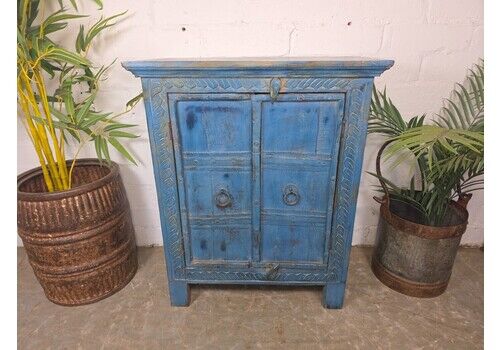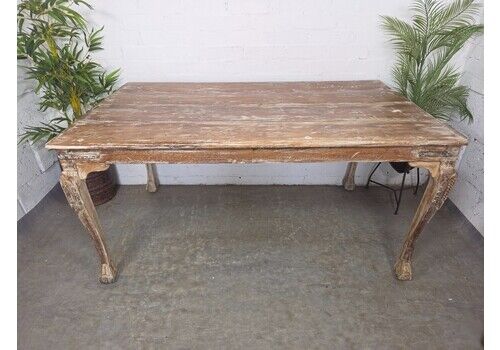Antique George IV Gonçalo Alves & Amboyna Marquetry Tea Caddy C1825 19th C
£1,550
Shopping at Vinterior
-
14-day return guarantee
-
Outstanding customer service
-
Secure payment
-
Buyer protection
-
Trees planted for every purchase

Item details
Height
24.0 cm
Width
41.0 cm
Depth
24.0 cm
Wear conditions
Excellent
Wear conditions
Excellent
Shows little to no signs of wear and tear.
Good
May show slight traces of use in keeping with age. Most vintage and antique items fit into this condition.
Average
Likely to show signs of some light scratching and ageing but still remains in a fair condition.
Apparent Wear and Tear
Visible signs of previous use including scratches, chips or stains.
Please refer to condition report, images or make a seller enquiry for additional information.
Description
This is an exquisite antique George IV Gonçalo Alves and amboyna marquetry inlaid tea caddy, circa 1825 in date.
It is beautifully decorated with superb marquetry decoration to the Gonçalo Alves and amboyna.
Of sarcophagus form, the lid enclosing an arrangement of two superbly decorated removable lidded canisters for the tea and a cut glass mixing bowl. The caddy is raised on decorative lion's paw feet.
Complete with original working lock and key.
There is no mistaking its unique quality and design which is sure to attract a lot of attention.
Condition:
In really excellent condition, please see photos for confirmation.
Dimensions in cm:
Height 24 x Width 41 x Depth 24
Dimensions in inches:
Height 9 inches x Width 1 foot, 4 inches x Depth 9 inches
Tea caddy
is a box, jar, canister, or other receptacle used to store tea. The word is believed to be derived from catty, the Chinese pound. The earliest examples that came to Europe were of Chinese porcelain, and approximated in shape to the ginger-jar. They had lids or stoppers likewise of china, and were most frequently blue and white. Until about 1800 they were called tea canisters rather than caddies.
Earlier tea caddies were made of either porcelain or faience. Later designs had more variety in materials and designs. Wood, pewter,brass, copper and even silver were employed, but in the end the material most frequently used was wood, and there still survive vast numbers of Georgian box-shaped caddies.. These were often mounted in brass and delicately inlaid. Many examples were made in Holland, principally of the earthenware of Delft. There were also many English factories producing high quality goods.
As the use of the jar waned and the box increased, the provision of different receptacles for green and black tea was abandoned, and the wooden caddy, with a lid and a lock, was made with two and often three divisions, the centre portion being reserved for sugar.
The larger varieties were known as tea chests. As tea grew cheaper there was less concern with the appearance of caddies, and as a result they fell out of use. The use of "tea caddy" instead of "biscuit tin" fell out of use in the early 1900s.
Gonçalo Alves is a hardwood (from the Portuguese name, Gonçalo Alves). It is sometimes referred to as tigerwood — a name that underscore the wood's often dramatic, contrasting color scheme.
While the sapwood is very light in color, the heartwood is a sombre brown, with dark streaks that give it a unique look. The wood's color deepens with exposure and age and even the plainer-looking wood has a natural luster.
Two species are usually listed as sources for gonçalo alves: Astronium fraxinifolium and Astronium graveolens, although other species in the genus may yield similar wood; the amount of striping that is present may vary.
In the high tropical forests of Central and South America, well-drained soils furnish nutrients for a variety of dense, durable hardwoods sought for maritime use, heavyconstruction, and furniture. The Spanish began harvesting in Latin American forests in the early 1500s to provide timber for boatbuilding and repair. By the early 1900s, however, steel ships had replaced wooden ones, and the interest in tropical forests by both Europeans and Americans shifted to appearance-grade woods for furniture.
Although history fails to provide us with a shopping list of species from either harvest period, it's probable that the wood we know today as goncalo alves has always been sought. That's because goncalo alves, considered one of the most beautiful of tropical woods, has a tough reputation, too. Strong and durable, it's used for construction in its homeland and secondarily for fine furniture. Woodworkers elsewhere treasure the wood for decorative items and veneer accents.
Cancellations
We offer free cancellations and full refund for orders cancelled before dispatching. View full policy.
Returns
We have a 14-day return guarantee for orders from individual sellers, within the UK and European Union. View full policy.
Free UK Mainland delivery.
Estimated delivery time
Less than one week
Free collection available
Yes
Similar Boxes
Similar Boxes
More from this seller
More from this seller
Choose a Wishlist
Create Wishlist
- Selling at Vinterior since 2016
- 307 sales
- Ships from London, United Kingdom
Seller Reviews

Verified Purchase


Verified Purchase


Verified Purchase

Cancellations and Returns
Last updated: 24th March 2025
We want everybody’s Vinterior experience to be seamless, so both buyers and sellers can fall in love with pre-loved. We designed our Terms of sale to treat everybody fairly.
However, sometimes things don’t go exactly to plan, and you may need to cancel or return an order.
To prevent this, we encourage you to check listings, photos and descriptions carefully before you buy. If you aren’t sure about a piece’s condition, size, provenance or shipping, just ask; click Contact seller to get in touch. Always contact your seller first if you have any queries, at any point in your purchase.
Our buyers receive the same protection when buying from all our sellers, both professional and verified.
Can I cancel an order?
There are many reasons why you might need to cancel an order, and you'll often be entitled to a refund. To cancel an order, click Create cancellation on the order page.
If you cancel your order before it has been dispatched, you will receive a full refund - including delivery costs. However, if your item has been shipped, delivery costs will not be included in your refund.
Please note: orders of bespoke, personalised or made-to-order pieces cannot be cancelled.
Can I return an order?
We understand that sometimes a piece isn’t the perfect fit. So if you no longer want your order, our returns process will ensure it finds a new home fast.
The Vinterior Guarantee included with your purchase entitles you to 14-day returns - allowing you to return any item within 14 days of the delivery date (except in specific circumstances, detailed below).
You can return your order if...
It isn't what you expected
If what arrives isn’t what you ordered, you can open a return. Just send us some photo evidence that the listing was inaccurate, misleading or misrepresented your purchased piece, and you’ll receive a refund.
You change your mind
If you don’t feel a piece is right for your space, you can return it. Once you request a change of mind return, you’ll be responsible for shipping the piece back to your seller as soon as possible. Delivery costs are non-refundable.
It's damaged in transit
In the rare event that an item arrives damaged or defective, you have a full 30 days from the date of delivery to return it for a full refund.
If your purchase arrives broken, always let us know. If Proovia delivered the piece, we can raise an insurance claim on the seller’s behalf. Or, the seller can raise a claim with their chosen courier.
What can't I return?
Just as there are some orders you can’t cancel, there are some you cant return, too. Personalised, bespoke or made-to-order pieces are non-returnable, and non-refundable. Sellers may also reject your return if the item has been altered in any way.
Please note: pieces on our site are pre-loved, not new. They may show some wear and tear; this is not sufficient grounds for a refund, unless the seller has misrepresented the item’s condition.
Lastly, neither Vinterior nor our sellers are liable for any damages or loss sustained in transit via third parties.
I'm eligible for a return. Now what?
To initiate a return, log into your Vinterior account, then go to the relevant order page and click Create a return. In the return request, be sure to include all the details: the reason for your return, an in-depth description, and photos of any issues or damage.
How will I receive my refund?
Once the seller confirms they’ve received the item (in the same condition it was sent), we will send your refund to your original payment method.
All items are inspected on return. If the seller receives the return with damage they don’t recognise, we will not be able to process your refund and the seller may need to send the piece back to you. You will be required to cover these delivery costs.








